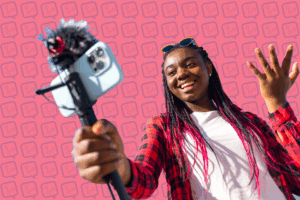Top 5 Things Influencers Should Know Before Working With Brands

As influencer marketing continues to soar in popularity, brands are increasingly turning to influencers to promote their products or services. This being said, there are several key considerations that influencers should be aware of to ensure a successful and mutually beneficial partnership. In this blog post, let’s explore five crucial things influencers should know before working with a brand.
1. Aligning Values and Audience:
Before agreeing to collaborate with a brand, influencers must assess whether the brand’s values and target audience align with their own. If the brand’s message conflicts with an influencer’s personal brand or values, followers may perceive the collaboration as inauthentic, leading to loss of trust and credibility. Simply put, choose brands whose products or services genuinely resonate with the influencer’s audience to maintain trust and engagement.
2.Transparency and Disclosure:
Influencers must adhere to legal regulations and industry guidelines concerning disclosure and transparency. Whether it’s a paid promotion, gifted product, or any other form of compensation, influencers are required to disclose their partnership with the brand clearly. Failure to disclose brand collaborations can lead to legal repercussions and damage the influencer’s reputation.
3.Negotiating Fair Compensation:
Influencers should not undervalue themselves when negotiating with brands. Understanding industry benchmarks and knowing the value of their work can help influencers set appropriate rates for their services. Additionally, influencers should also consider other factors such as exclusivity agreements, usage rights, and the brand’s overall marketing budget when negotiating compensation.
4. Understanding Brand Expectations:
Each brand collaboration will come with specific expectations and deliverables. This includes the type of content required, posting schedule, messaging guidelines, and any performance metrics the brand may be tracking. By knowing the brand’s objectives and expectations, influencers can both create content that aligns with the brand’s vision and maintain their unique style.
5. Long-term vs. One-time Partnerships:
Influencers should consider whether they prefer one-time brand partnerships or long-term collaborations. While one-time partnerships can provide immediate income, long-term partnerships often offer stability and the chance to build stronger relationships with the brand and its audience. Both options have their advantages, and influencers should weigh the pros and cons based on their individual goals and values.
Working with brands can be a lucrative avenue for influencers to grow their personal brand and monetize their content. However, it is crucial to approach brand collaborations with careful consideration. By implementing the principles above, influencers can build meaningful and successful relationships with brands while maintaining the trust and loyalty of their audience.






